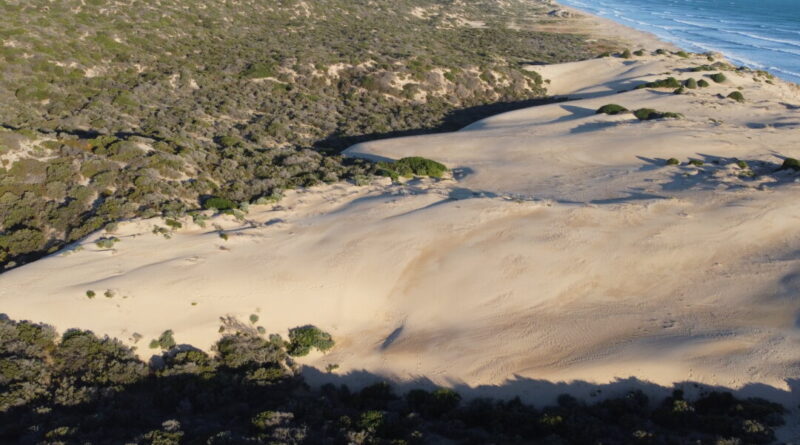Australian Coastal Sand Dunes Receding Rapidly Due to Ocean Erosion
Sand dunes lining Australia’s longest beach are advancing inland at a pace of a tennis court width each year, as rapid erosion is triggered by the increased lapping of the Southern Ocean.
Data collected painstakingly by scientists from Flinders University reveals that a central section of shoreline along South Australia’s Younghusband Peninsula is vanishing at a rate of 3.3 meters annually.
The more concerning issue is that the sand exposed to the wind as the beach is carved open is retreating from the waves at a rate of 10 meters per year, posing a threat to the iconic Coorong.
Located 180 kilometers southwest of Adelaide, the Ramsar-listed wetlands extend to the mouth of the mighty Murray River and are situated on the land of the Ngarrindjeri people, setting the scene for the beloved Australian children’s story, Storm Boy.
Home to Australia’s largest pelican rookery and a variety of exotic bird species like pied oystercatchers, red-necked avocets, diminishing orange-bellied parrots, and the elusive Australasian bittern, the network of critically endangered coastal lagoons faces a bleak future if the encroaching dunes persist, according to Flinders’ environmental science head Patrick Hesp.
However, the issue is unfolding visibly and rapidly.
“This rapid development rate is unprecedented, and if the current trend of shoreline erosion continues to expand north and south as observed, it will significantly alter the national park dune system,” Professor Hesp stated.
“Moreover, it could have a profound impact on the Coorong Lagoon as the dune sands encroach upon it.”
At 42 Mile Crossing within the 190-kilometer-long peninsula, a significant phase of shoreline erosion is underway.
Although the coastal barrier was mostly barren in the 1940s, it has gradually transformed since the removal of rabbits and grazing by domestic animals. Nonetheless, the shoreline has eroded by 100 meters since 1980, averaging a rate of 1.9 meters per year, as per Prof Hesp.
A new dunefield formed within less than five years and has expanded landwards by over 100 meters in eight years.
“We usually associate dune formation phases with long periods of time, but our research on the Younghusband Peninsula has shown the contrary,” stated Dr. Marcio DaSilva, who conducted his PhD on the subject.
“We are observing the evolutionary path of the coastal sand sheet as it reacts to ongoing erosion, transitioning from a dune sheet to a dunefield.”
While various hypotheses have been proposed to explain the phenomena, confirmed factors include escalating ocean wind speeds and wave heights.
Prof Hesp mentioned that sea levels have been rising for over a century and wave energy has notably increased in the past decade. Additionally, offshore reefs that would have shielded the coast have deteriorated.
These findings underscore the urgency for intensified research on coastal processes, specifically concerning the connections between sea level rise, future climate change, and the response of coastal dune systems.
“This study provides concrete evidence that shoreline erosion and subsequent encroachment of a previously vegetated dunefield have led to the rapid formation of a new transgressive dune field in less than a decade,” he added.
“It serves as a warning signal that action needs to be taken.”





